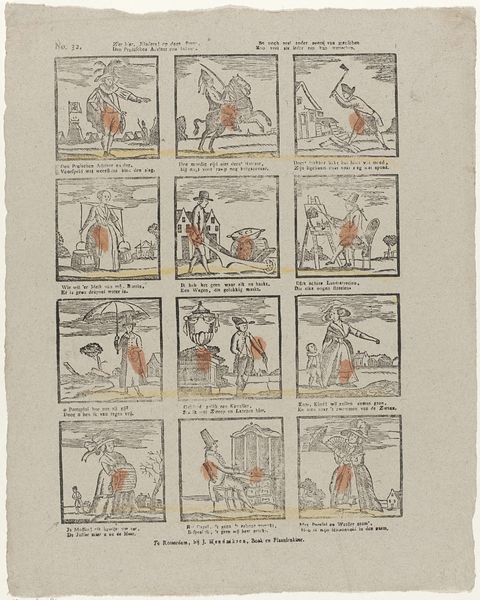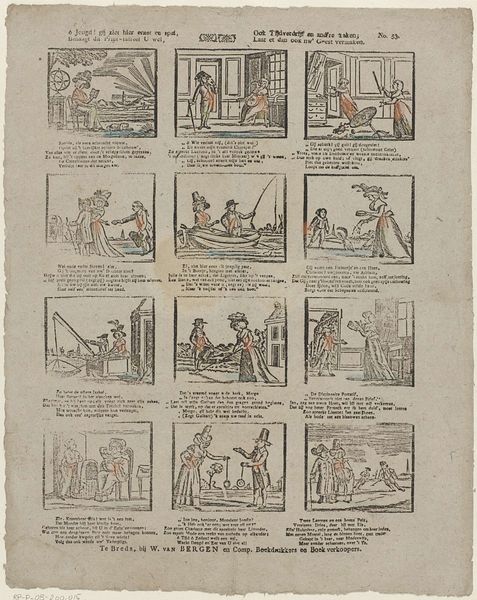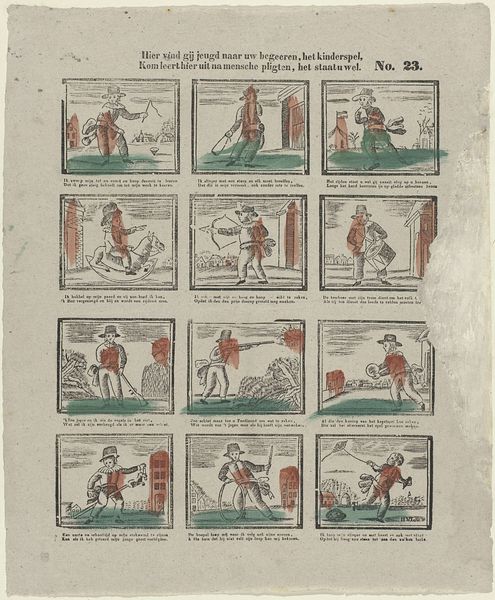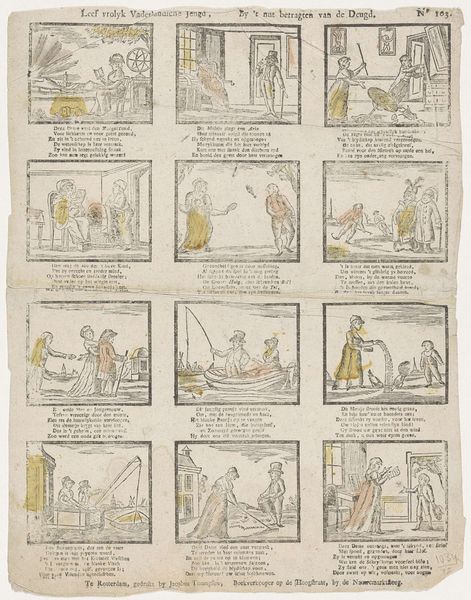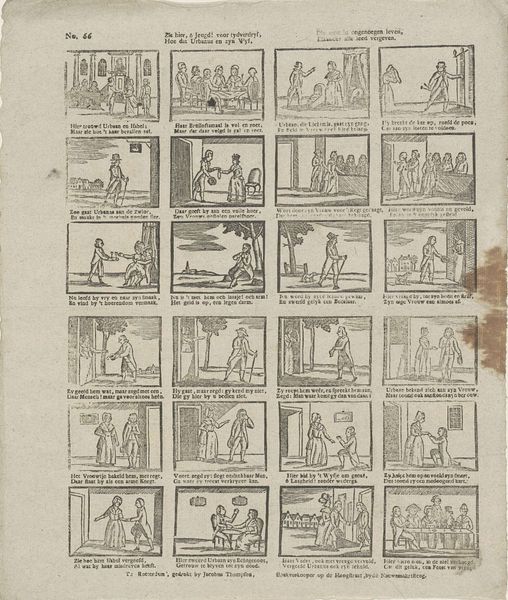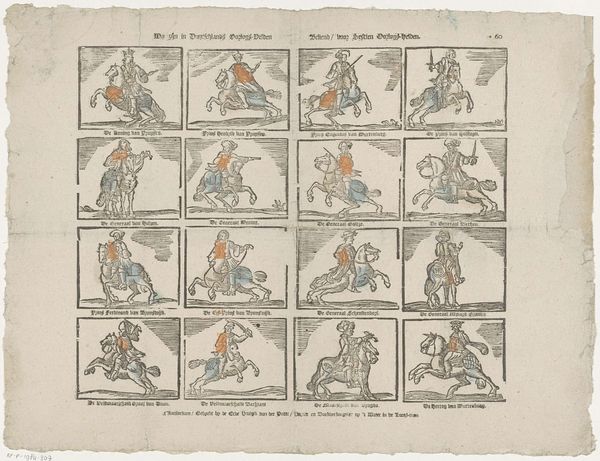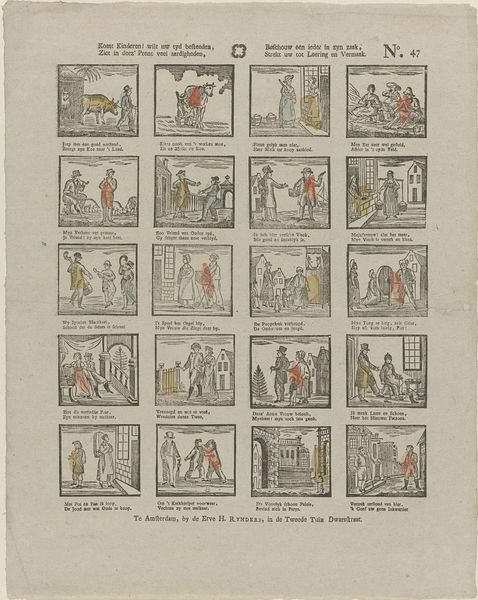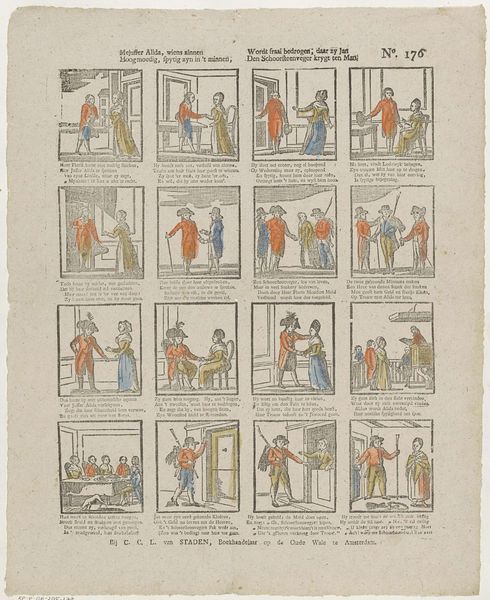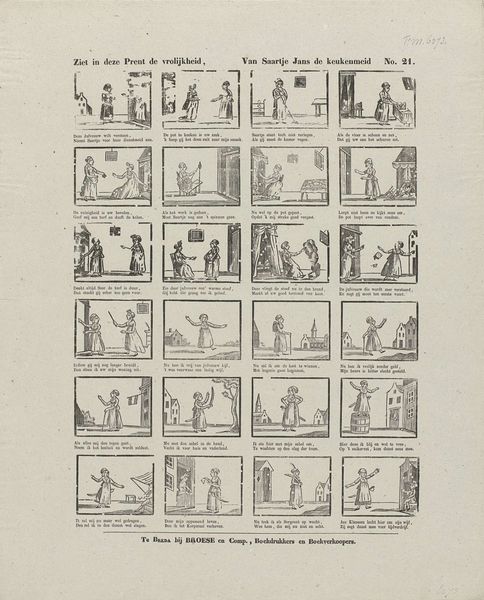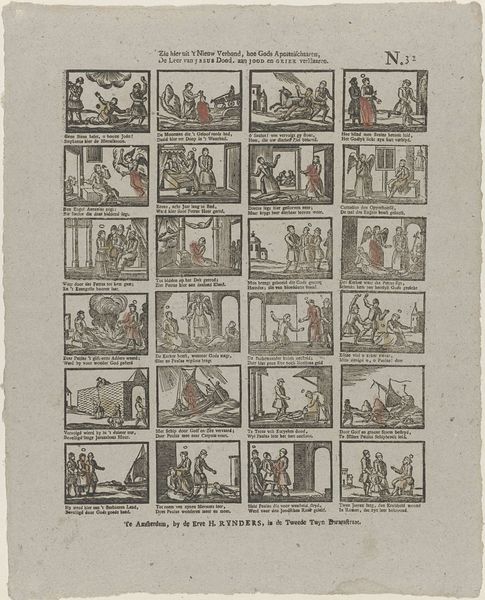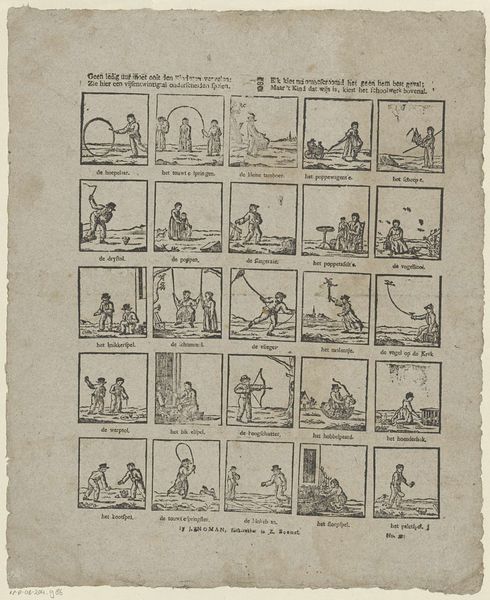
Dimensions: height 387 mm, width 322 mm
Copyright: Rijks Museum: Open Domain
Curator: This engraving, simply titled "Paljas", was created sometime between 1822 and 1849 by Mindermann & Co. While "Paljas" might be translated as "clown," the artwork really delivers a full narrative through sequential images. What is your initial response to this set of panels? Editor: The immediate impact is this old comic strip style - reminds me of those very early newspapers trying to tell whole stories through images alone. And something about the lines gives it such an intimate feel even though its mass produced. Curator: It's interesting you note the 'comic strip' feel, because in its historical context, prints like this offered accessible forms of visual storytelling. Beyond just entertainment, they offer valuable insight into popular culture and societal values of the period. The protagonist’s red details and clown-like dress can offer valuable insight into class. Editor: Yes, looking closer, these depictions of acrobatics carry symbolism—balancing, precariousness, even folly, reflecting common anxieties and even societal imbalances. His garb certainly seems purposeful, and the scenes depict very low-brow activity. Is he then a figure to mock? Curator: Exactly. While the print can be read purely for entertainment, that sort of reading elides potential social and political commentaries. This character allows viewers to observe and interpret the vulnerabilities of particular social strata in the society of that moment. Editor: It does bring to mind how, across cultures, clowns often hold a mirror to power, cloaked in humor. There’s a vulnerability but also power in Paljas’s precarious balance on the ropes. Curator: It allows for questioning and critiques. Looking through a contemporary lens, one may even view Mindermann's Paljas as an allegory for marginalized communities striving for visibility and agency, turning potential shame into pride. Editor: Thinking of cultural memory here…clowns and acrobats have played such diverse symbolic roles! Each appearance through history informs our reading of the symbols today. So much in such small frames! Curator: I find the format especially engaging; sequential panels force the viewer to become an active reader, deciphering visual clues across time. Editor: Yes. Now, whenever I think of "Paljas", I'll be sure to see those layers of interpretation and symbol behind what might be too easily dismissed as simple entertainment.
Comments
No comments
Be the first to comment and join the conversation on the ultimate creative platform.
